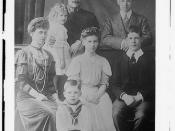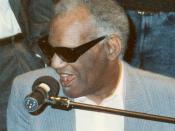Jason Marks
000819093
AMUS 319Z
Assignment #1
The 1950's was a very interesting time for the music industry. Changes were going on that would shape the musical styles that we listen to even today. Looking at this from the musicians point of view, these changes were welcomed by some, disliked by others, and still others felt indifferent. Nonetheless, The Public's taste in music was changing, and record producers and DJ's were starting to give them what they wanted to hear.
In terms of labeling the genre of music, this was a very confusing time. Many names were being thrown around to label the types of new music that were becoming popular, from blues, and rhythm and blues, to black music and race music. Along with many other black artists at this time, B.B. King thought that songs were being labeled as rhythm and blues and race music just because the artist who sang the song was black.
King said, "They classed things that Louis Jordan was doing as rhythm and blues," as well as "Dinah Washington was considered rhythm and blues or race, but Dinah sang anything that anybody else sang." (The Pop Rock and Soul Reader p.59). Ruth Brown agreed with this. On page 64, she says that "The rhythm and blues chart was another way in the late forties and early fifties to list race and black music as well as rhythm and blues records." The Billboard chart, the standard for determining popular music at the time, was made up of playlists from radio stations that were white- owned and played predominately white music.
Early on, rhythm and blues was more or less listened to by strictly black audiences. Jerry Wexler, a producer at Atlantic Records, said that when he first started working at Atlantic, the idea...


